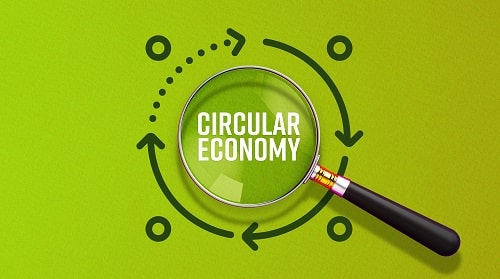Transport for London has introduced stricter safety equipment requirements for heavy goods vehicles operating within most of Greater London, but leading industrial gas manufacturer Air Products has decided to go further by rolling out the latest artificial intelligence (AI) technology on its fleet operating across the UK, to ensure its drivers are always in a position to detect and respond to vulnerable road users.
Features
TfL’s Direct Vision Standard for HGVs: how Air Products is using AI systems and sensors to comply
Driving a heavy goods vehicle (HGV) carries a huge weight of responsibility – not least because, historically, HGVs have been involved in more fatal collisions with vulnerable road users, such as pedestrians and cyclists, than any other vehicle¹.
 Photograph: Air Products
Photograph: Air Products
While these figures are improving, there remains more to do, and no fleet operator can afford to be complacent. At Air Products, a leading industrial gas manufacturer, we believe that all safety incidents are avoidable, and that technology and artificial intelligence will be central to realising this vision.
We’re not alone in this view – in fact, Transport for London (TfL) is in the process of upgrading its Direct Vision Standard² to put the emphasis on the use of technology and AI systems and sensors, to enhance existing in-cab systems.
The Direct Vision Standard (DVS) was first introduced by TfL in 2019 and enforced in 2021, and is designed specifically to minimise risk to vulnerable road users. It objectively measures a driver’s direct view through the windows of an HGV cab and uses this to define the level of risk to road users near the vehicle. This is expressed as a star rating from zero (poor) to five stars (good).
The updated standard requires HGVs to meet a minimum three-star rating, and while it’s only applicable to trucks operating within the M25, we’ve taken the decision to implement its requirements across our fleet, UK-wide. Our view is that risks to vulnerable road uses are present regardless of whether in a busy urban environment or in a rural village, and that anything we can do to mitigate those risks should be done.
So, what does that look like in practice?
AI in action
Air Products operates in the region of 300 trucks across the UK, comprising tractor units and rigids. To date, we have trialled the use of a progressive safe system across our bulk tractor unit (based at Didcot) and CYE rigid vehicles (Slough-based). This system, which was developed in partnership with vehicle electronics specialist Motormax, comprises seven core components:
- Camera monitoring system, fitted to the nearside of the vehicle
- Class V and VI mirrors
- Blind spot sensors fitted to vehicle nearside
- Moving off sensors fitted to front of vehicle
- Side under-run protection
- Audible warning alert when vehicle turns left
- Prominent visual warning signage.
Both the Nearside Blind Spot Information System (BSIS) and the Moving Off Information System (MOIS) are particularly interesting and use the latest AI technology, via three cameras, to alert drivers to vulnerable road users and allow them to respond accordingly.
What makes this different to the sensors that are commonly used for slow-speed manoeuvring? Specifically, it’s that they use AI to detect human form, as opposed to what, in the trade, we refer to as road furniture – in other words inanimate objects such as fences, lampposts and so on.
In practice, this means that our drivers benefit from specific warning support in a very dynamic urban environment where there are potentially multiple dangers nearby such as pedestrians and cyclists. This technology will ultimately help to protect all parties – pedestrians, cyclists and drivers.
How the system works
The BSIS:
- AI detects human form up to 2.2 metres away, the camera then switches on and our drivers are given an in-cab amber warning
- If that human form changes direction and moves closer to the vehicle, the alert flashes red and is accompanied by an audio sound. The driver can then take evasive action to prevent a collision.
The MOIS:
- Uses AI to detect human form up to two metres in front of the vehicle
- This is particularly important in scenarios where, for example, drivers may be stationary at traffic lights and a pedestrian or cyclist has potentially moved in front of the truck into the area known as the ‘blind spot’, therefore out of the driver’s direct line of sight.
Delivered in partnership
Of course, any new system or technology must be developed with the end-user in mind, to ensure it is fully functional and fit for purpose. Our goal throughout has been to avoid unnecessary complexity, and ensure the system genuinely benefits our drivers and their ability to operate safely.
This has meant developing and trialling these systems in close partnership with them. Drivers have had the opportunity to test and explore the technology at every stage, ultimately helping us to adapt and refine as we go. As a result, the feedback from our driver team has been overwhelmingly positive.
Steve Blacker, an HGV driver at Air Products, said: “Having the different levels of visual and audible warnings which determine the difference between street furniture, pedestrians and cyclists is revolutionary. What’s great is that the system cuts out being constantly warned because it thinks a barrier or street sign is a danger. This ultimately can become white noise because you struggle to identify the real dangers, which then defeats what it’s there to do.
“Overall, this is a fantastic safety device that gives the driver reassurance of knowing the system will alert you to danger.”
We were also delighted when Dr Steve Summerskill, senior lecturer and programme director for Product Design and Technology at Loughborough University, confirmed that the new system meets TfL’s Direct Vision Standard. Steve and his team at Loughborough University designed the Standard, the minimum requirements for direct vision from HGV cabs, and the Progressive Safe System (PSS)³, which defined the safety technology that must be fitted, so having this approval is particularly important.
 Mark Pawsey is UK distribution manager at Air Products. Photograph: Air Products
Mark Pawsey is UK distribution manager at Air Products. Photograph: Air Products
Does any of this replace the need for human checks and balances, however? Of course not, and our drivers are clear that the requirement for good practice such as ‘GOAL’ (Get Out And Look), and mirror checks remains. But what it does do is enhance and support the extensive and ongoing training that our drivers already receive and gives them even greater reassurance when they are out on the road.
A continued evolution
Following the success of the trial, a full deployment schedule has started, with a planned completion by late April 2025 in line with the recent TfL DVS extension. This will be implemented across our trucks UK-wide as opposed to being restricted to those operating within the M25.
It’s apparent, however, from the Road Haulage Association’s recent call for an even longer grace period, that many hauliers are struggling to get their fleets upgraded in time to meet these tougher standards.
We’re proud that at Air Products we’re on the front foot but there’s no room for complacency and we will continue to test and train on the new systems to ensure they can reach their full potential. Any incident is one too many and we must all embrace the role of technology and AI in making all road users safer.
It’s increasingly clear that by combining the skill and extensive training of our drivers with sophisticated technologies and AI we can make a marked impact on road safety. Is the road ahead, and the process of change, long and sometimes challenging? Yes. But is it worthwhile? Absolutely.
Mark Pawsey is UK distribution manager at Air Products.
For more information see:
linkedin.com/company/air-products
References
- Transport for London, Direct Vision Standard: Guidance for Operators, tinyurl.com/52es7djb
- Transport for London, Direct Vision Standard, tinyurl.com/yc6dm5yy
- Transport for London, Progressive Safe System, tinyurl.com/47uue3aj
FEATURES

How to build circular economy business models
By Chloe Miller, CC Consulting on 07 April 2025
Widespread adoption of a circular economy model by business would ensure greater environmental and economic value is extracted and retained from raw materials and products, while simultaneously reducing carbon emissions, protecting the environment and boosting business efficiency and reputation.

What does the first year on an accelerated net zero path have in store for UK businesses?
By Team Energy on 07 April 2025
The UK is halfway to net zero by 2050 and on a new, sped-up net zero pathway. In light of this, Graham Paul, sales, marketing & client services director at TEAM Energy, speaks to TEAM Energy’s efficiency and carbon reduction experts about the future of energy efficiency and net zero in the UK.

Aligning organisational culture with sustainability: a win, win for the environment and business
By Dr Keith Whitehead, British Safety Council on 04 April 2025
The culture of an organisation is crucial in determining how successfully it implements, integrates and achieves its sustainability and environmental goals and practices. However, there are a number of simple ways of ensuring a positive organisational culture where everyone is fully committed to achieving excellent sustainability performance.



